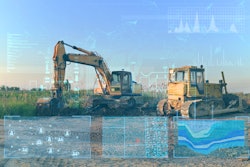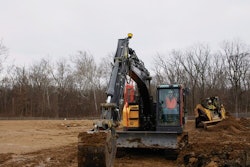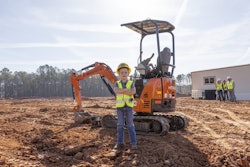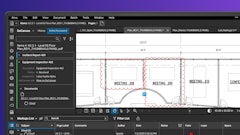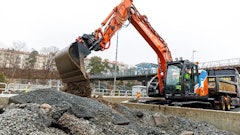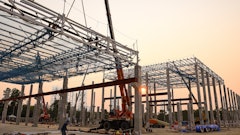
Construction has entered a new era of labor intelligence, where timekeeping isn't just about tracking hours but about gaining strategic insights into workforce performance. The hard truth is simple: if you can't measure your labor accurately, you can't manage your business. And right now, most construction companies are flying blind.
Labor accounts for 30% or more of a contractor's costs, making it the most expensive and complicated asset in any construction business. Yet despite this critical importance, the industry continues to rely on methods that would seem antiquated in any other sector. With the construction industry facing an estimated 88% difficulty rate in filling hourly craft positions according to the Associated General Contractors of America, the margin for error in labor management has never been smaller.
The Limitations of Traditional Timekeeping Methods
Paper timesheets appear cost-effective but represent hidden expenses in disguise. There's no verification, no audit trail, and limited accountability. These systems rely heavily on the honor system, which can become problematic when margins are tight and supervision is spread thin across multiple jobsites.
Digital apps sound modern, but they're built on assumptions that don't always hold true in construction environments. While smartphone adoption in construction has reached impressive levels, with industry surveys showing over 85% of the adult U.S. population own a smartphone, app-based timekeeping still faces significant challenges. Issues like poor signal coverage, dead batteries, damaged phones and simple human forgetfulness frequently disrupt digital timekeeping systems. App fatigue is real. Workers often struggle with remembering to clock in and out twice daily, every day. These solutions often create as many problems as they solve.
Foreman-led systems ask too much of one person. Foremen are expected to remember who was where, for how long, and doing what, all while managing materials, subcontractors, safety protocols and production targets. Even when these systems offer bulk entries and copy/paste features, they primarily help foremen document faster but they still cause an issue when it comes down to accuracy of data.
The AI Revolution in Workforce Management
The construction industry has reached a pivotal moment where AI-powered biometric systems are transforming time tracking from reactive tracking to proactive workforce optimization. This technology revolution replaces guessing games with verified, real-time data that flows seamlessly into payroll and project management systems.
According to McKinsey’s 2025 report, 'Superagency in the Workplace', AI could automate up to 30% of work hours by 2030, potentially unlocking $4.4 trillion in productivity, as AI safety and capabilities improve. For construction companies, this means AI can handle the tedious aspects of timekeeping while freeing up human resources for higher-value activities.
The market is responding to this opportunity. Construction time and attendance systems now leverage mobile applications, biometric devices, and RFID tags to create visibility on labor costs and field data. Workers can clock in and out using facial verification or fingerprint scanning, with data automatically compiled to produce error-proof time tracking data and productivity insights.
The adoption of real-time facial biometric technology is transforming jobsite operations across the industry. Recent implementations demonstrate how contractors are moving from paper-based inefficiencies to precise, data-driven execution. For example, partnerships between technology providers like SmartBarrel and contractors such as Dynamic Systems illustrate these changes in practice.
This transformation extends beyond replacing paper timesheets and creates a foundation for data-driven workforce management. When contractors can verify exactly who was on-site, when they arrived, and how long they worked, what they worked on, they gain unprecedented visibility into their most significant cost center.
The Strategic Advantages of Verified Labor Data
Real-time time tracking delivers benefits that extend far beyond payroll accuracy. Project managers can identify productivity patterns, optimize crew scheduling, and spot potential issues before they impact deadlines. Financial teams can reconcile labor costs in real-time rather than waiting for end-of-week manual calculations.
AI-powered systems also address compliance challenges that affect the construction industry. With automated timekeeping and leave management, companies can reduce compliance breaches while maintaining detailed audit trails. This is particularly crucial as regulatory requirements become more complex and penalties more severe.
The technology also eliminates the disputes that drain administrative resources. When time tracking is verified through biometrics, there's no ambiguity about hours worked or breaks taken. Disputes that once required hours of investigation and documentation simply disappear.
Implementation: The Critical Success Factor
As the industry learned from the broader construction technology boom, where $50 billion was invested between 2020 and 2022 with mixed adoption results, successful implementation requires more than just good technology. It requires a strategic approach to change management.
The most successful deployments start with pilot projects, select field champions, and collect user feedback to refine workflows. Field workers need to understand how this technology benefits them through faster clock-ins, accurate pay and reduced paperwork. Office staff need to see the value in automated reports and real-time visibility.
Successful technology providers focus not just on delivering solutions, but on operationalizing them within existing workflows. The emphasis goes beyond introducing new features and focuses on listening, training and aligning new systems with the natural rhythm of the jobsite.
The Future of Construction Labor Management
The construction industry's transition from experimental AI to implementation and execution is accelerating. This shift represents more than technological advancement. It's a fundamental change in how construction companies understand and manage their workforce. Companies that embrace verified, real-time labor data position themselves to optimize productivity, reduce costs and build competitive advantages that extend far beyond simple timekeeping.
The question isn't whether AI will transform construction labor management but how quickly companies will adopt systems that turn their greatest operational challenge into their strongest asset. In an industry where precision matters and margins are tight, the difference between estimation and verified data becomes crucial for competitive advantage.




